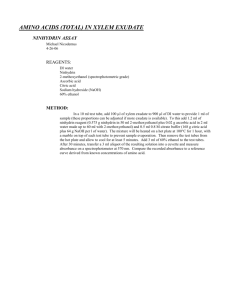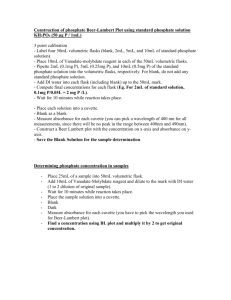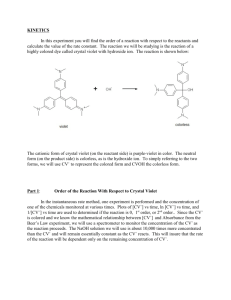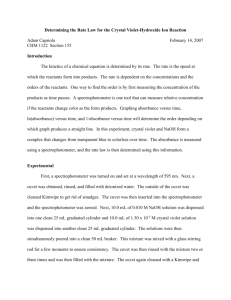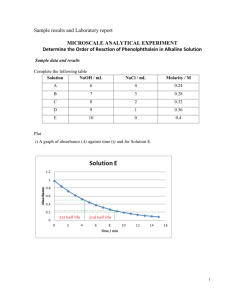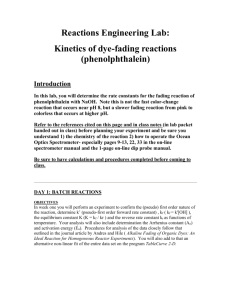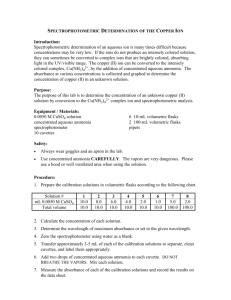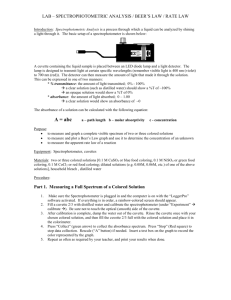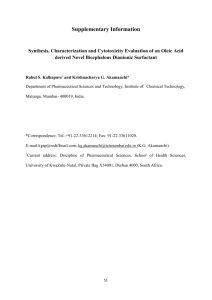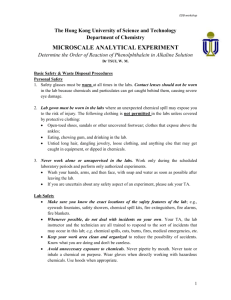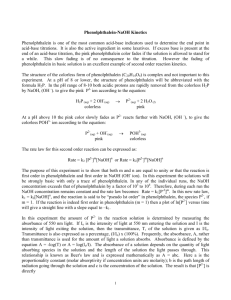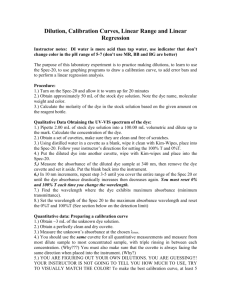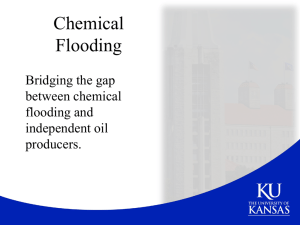Investigation 11Crystal Violet Lab
advertisement
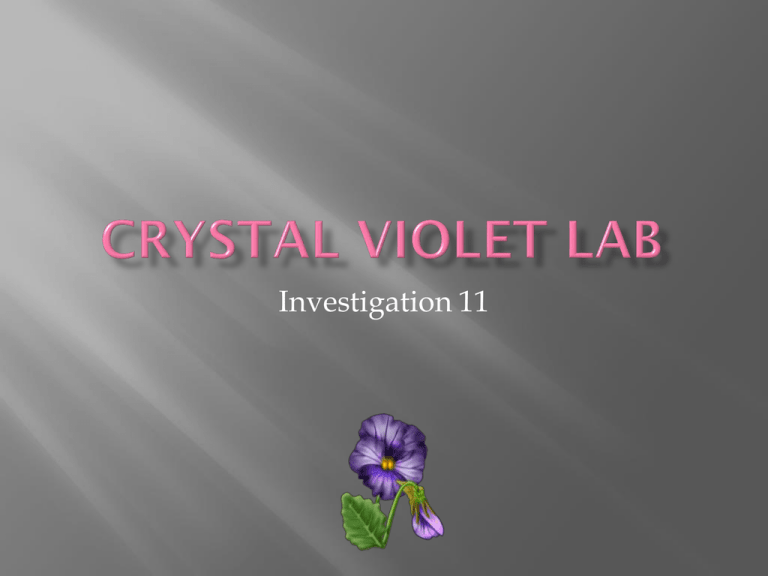
Investigation 11 Serial dilution CV will stain skin and clothes NaOH is a corrosive skin irritant Wear goggles and aprons Clean stained glassware with isopropyl alcohol. A) using wavelength of 540 nm should result in an absorbance high enough to provide an acceptable range of absorbance values during the reaction of CV and NaOH while ensuring it is not too high to interfere with reliability of the instrument. CV in micro M Predicted absorbance 5 .26 10 .52 15 .78 20 1.04 25 1.30 Use dilution equation M1V1=M2V2 M1=25 microM V1 is unknown M2 is each desired final M specified in question V2 is 10ml CV in microM Volume of CV Volume of Water added 5 2 8 10 4 6 15 6 4 20 8 2 25 10 0 Absorbance should decrease because the amount of a reactant like CV decreases over time so more light passes through cuvette. Note that by first calibrating / zeroing instrument with blank cuvette the instrument reads just the absorbance due to whatever was not in the blank which in this case is the CV In 1:1 ration nothing is left of either and goes to completion In 1:1000 ration CV is limiting so none left. Assume 1 mol of CV initial CV NaOH I 1 1000 c -1 -1 e 0 999 When the concentration of one chemical is several orders of magnitude higher than another its concentration hardly changes. To within few sig figs we can assume it is constant So [NaOH]z is practically the same at the beginning as at the end of rxn and can be bundled in with k as new constant k* Fill in the following table Order with Integrated respect to CV rate law Plot that is linear slope Half life For a total of 10mL combined volume the following combination works well: 6mL 25microM CV with 4.00mL of 0.200M Na OH and blank cuvette of 6mL of distilled water combined with 4 mL of NaOH Fig 3 shows three plots each for different chem rxn. Looking at fig 3 one can see that the reaction that is 0 order (blue) produces a straight line for a graph concentration vs time. The graphs for a different rxn which is first order (red) and one for second( yellow) appear to relatively linear until concentration dips from starting value of 10M to roughly 1 or 2M For quite a while all there follow linear relationship. You have to collect data for a sufficient amount of time. So don't collect data for a set period of time. Instead collect until the value of the absorbance of CV and its reaction with NaOH has dropped to roughly 10%-20% of initial value. At that point only 1 graph is linear of those three different chemical reactions. http://www.chm.davidson.edu/vce/kinetics/ integratedratelaws.html Typical cuvette ranges from 4mL to 6mL You can make 10Ml of solution and pouring it into cuvette For the first reaction of CV with NaOH a blank could be made from 6.00 mL distilled water + 4.00 mL 0.2M NaOH. This has everything but CV to zero the absorbance reading Then to perform actual rxn of CV and NaOH combine 6mL 25.0micro M CV with 4 mL of 0.200 M NaOH Concentration in Micro M Predicted absorbance 12.5 0.742 10 0.639 7.5 0.508 5 0.332 2.5 0.159 Design the experiment to determine the kinetics of candle burning. Some ideas that would influence the kinetics are: a) Temp of air b) Different brands or types of wax c) Humidity of the air d) Shape of one type of candle possibly modified via whittling with kids scissors e) Length of the wick exposed f) Still air vs wind blowing (eg. Fan turned on a low setting)

